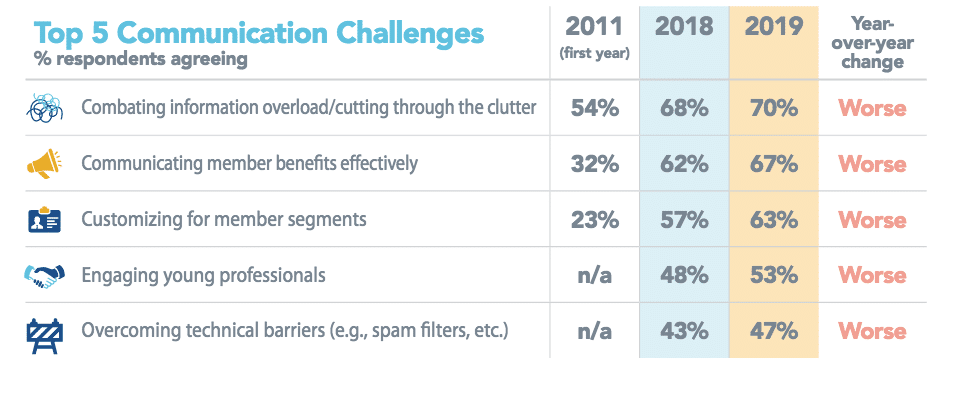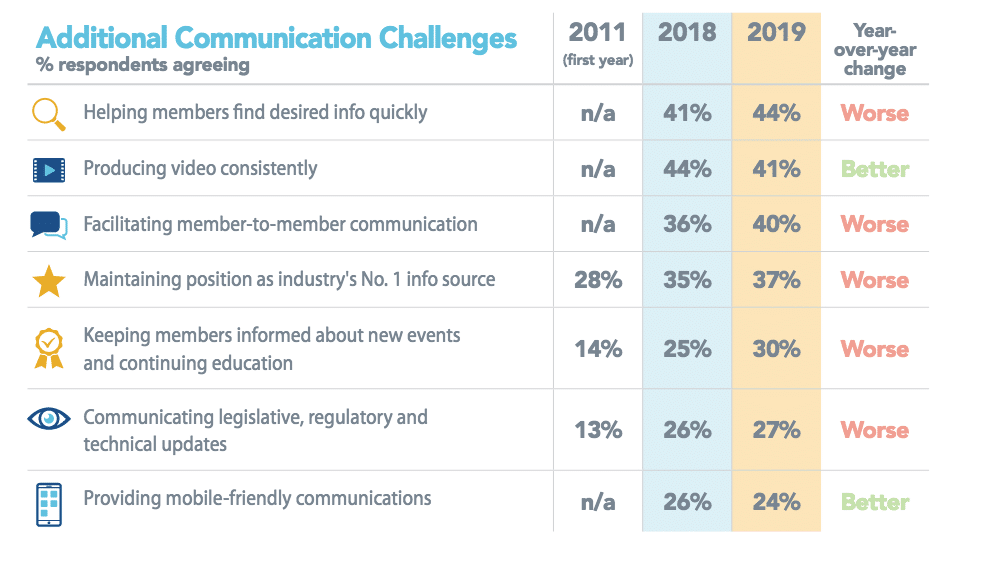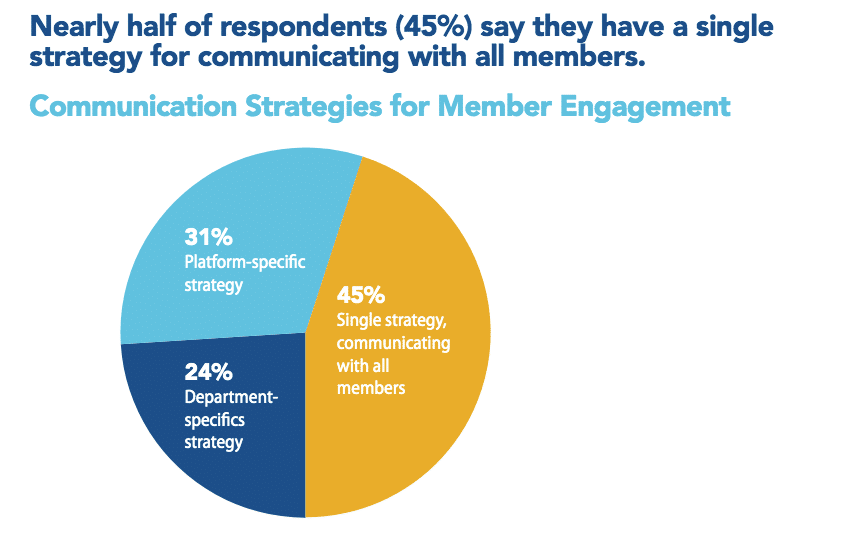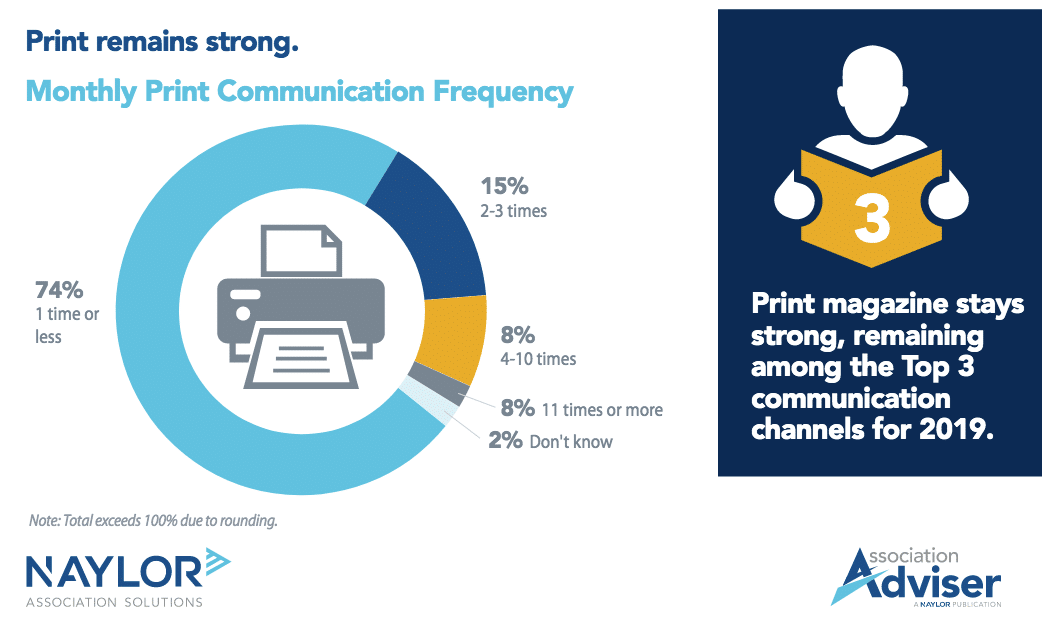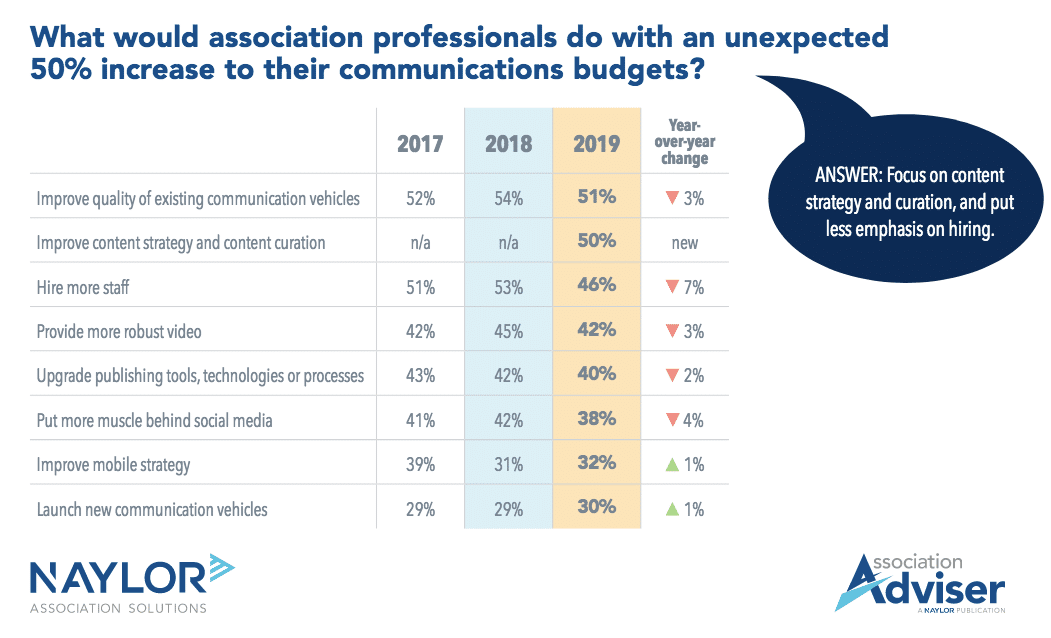Today’s association communicators know all too well that creating a long-term, one-size-fits-all comms strategy are gone—they must instead deliver an integrated program that speaks to members on an individual level and positions themselves as the go-to source for industry information, reveals new research from Naylor Association Solutions.
But according to the orgs’ 2019 Association Communications Benchmarking Report, many of this year’s survey respondents admitted they struggle to deliver on those expectations in the face of members’ changing preferences for a broad range of communication channels and competition from other information sources.
“Information overload/communication clutter” remains the most frequently cited communication challenge in 2019, followed by “inability to communicate member benefits effectively” and “customizing for different member segments.” Moreover, the number of respondents who said they find these topics a challenge increased compared to 2018: 70 percent for combating information overload and 67 percent for communicating member benefits effectively, compared to 68 and 62 percent, respectively, in 2018.
A majority of survey respondents have cited these long-term challenges year after year since Naylor’s Association Adviser began the survey in 2011.
So why, despite communicating with members an average 30 times per month, are associations still having trouble overcoming the same obstacles?
“We’re understanding that big improvements to member communication plans can take time because they involve so many moving and unpredictable parts: the ability to staff or outsource, keeping a pulse on members’ and advertisers’ changing communication preferences, and carving out time to train on new technology platforms, to name a few,” said Sarah Sain, director of content, member communications for Naylor Association Solutions, in a news release.
“But that doesn’t mean improvements are impossible,” Sain continued. “Associations are gaining ground in using member data and embracing new ways to communicate with members. More associations are using their website, social media, a dedicated phone line and web-based chat to address member needs than before. Associations also report improving their video production and mobile-friendly, in-demand channels like text messaging, which saw double-digit growth for the second year in a row. And they’re customizing more and more content for young professionals and students in an effort to build their membership pipelines.”
Digital communications remain highly valued by staff and members: Association websites are considered very/extremely valuable by 70 percent of respondents, while 65 percent consider mass emails valuable. However, events remain the most respected member communication tool—94 percent of respondents say traditional conferences or events are valuable or extremely valuable to their association, and training or certification events came in second. The latter is new to our top 10 communication channels this year.
Print remains a strong component of an association’s overall communications strategy
Seventy-eight percent of respondents—an increase of 4 percentage points over 2018—now consider their member magazine very valuable to their communications portfolio. More respondents (59 percent in 2019 versus 57 percent in 2018) also consider their printed member newsletter very/extremely valuable. Although printed show guides declined by 7 percent, roughly half of respondents still consider this event-related communications piece important to their offerings.
“Focusing on print communications may be one way that understaffed associations can get the most mileage out of limited time and resources,” Sain said. “Considering that 27 out of the average 30 communications that associations send members each month are digital, printed communication can be an effective way to rise above the noise and articulate membership value.”
Nearly 3,000 senior leaders of North American trade associations, professional societies and association management companies have completed Naylor’s online surveys over the past eight years. Respondents representing a mix of small, midsize and large organizations across more than 100 industries have a wide range of communication challenges but one thing in common: While they have more tools available to communicate, their members (and prospective members) have never been harder to reach, harder to impress or more likely to question the value of their membership.
This report compares an individual association’s responses to industry-wide communication best practices and a grading scale, and provides suggestions for how association communicators can improve their communications in five of the key sections the survey measures.


